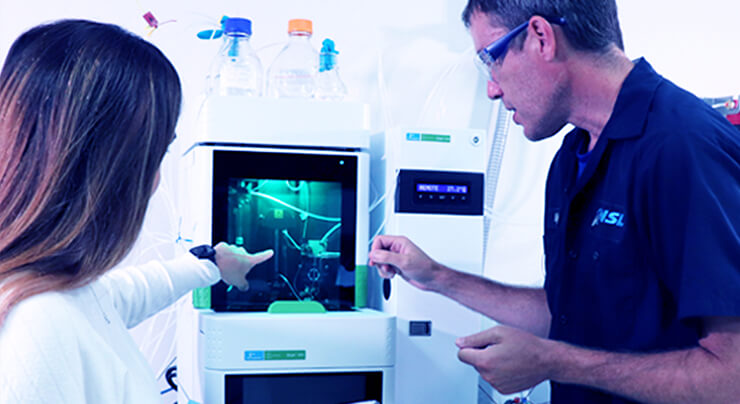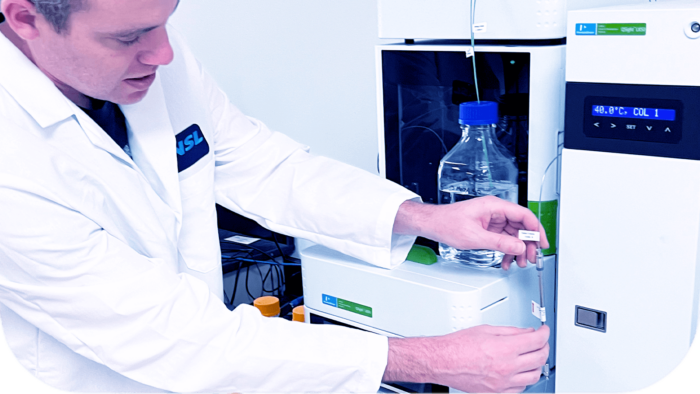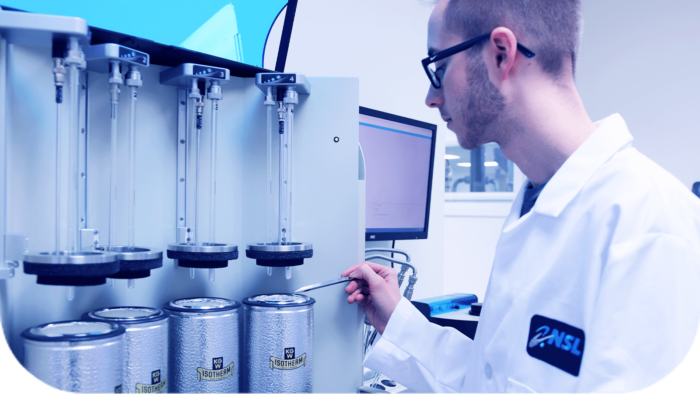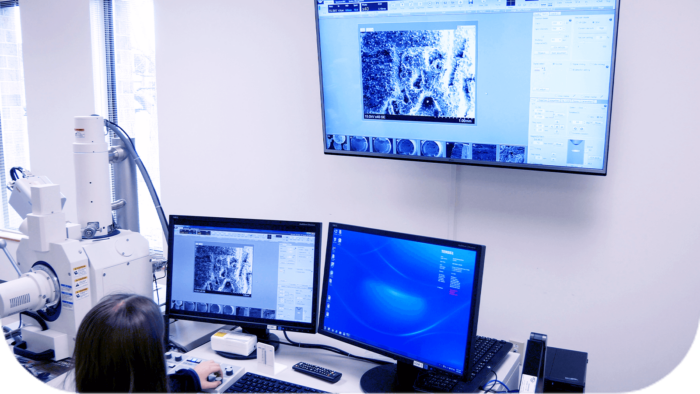Microstructure (Microscopy Evaluations)
NSL provides metallurgical evaluations, SEM analysis testing services, & microstructure analysis. Contact us to learn more or request a quote.
SEM Analysis (Scanning Electron Microscopy)
NSL Analytical’s state-of-the-art Scanning Electron Microscopy Lab provides high magnification-high resolution imaging of samples at magnifications from 15-50,000X. Our large sample chamber can accommodate samples up to approximately six inches in length by three inches wide.
Remotely access material evaluations in real-time from your computer to watch, assist, or even drive the SEM. With this exciting technology, you can feel like you are in our lab during SEM analysis, from the comfort of your own office.
SEM Testing Lab
An Energy Dispersive Spectrometer (EDS) system attached to the SEM allows NSL Analytical to provide semi-quantitative microanalysis of discrete areas on a sample. Our microscopy capabilities include:
- Scanning Electron Microscope (SEM) evaluations at 15-50,000x magnification
- SEM equipped with Energy Dispersive Spectroscopy (EDS) detector capable of semi-quantitative micro-chemical analysis and Rutherford Backscattering capabilities
- Remote SEM evaluations available







